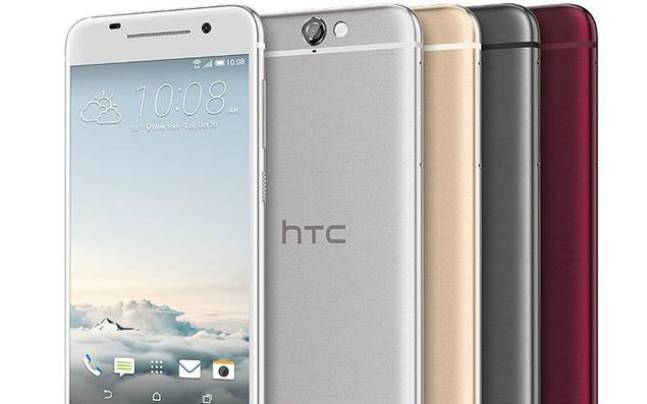HTC launched two phones on Wednesday- the flagship One A9 and the mid-range Desire 828 in the Indian market. Note that the manufacturer hasn’t revealed pricing of both the phones yet, so the monikers that we’ve given to them are based entirely on how these phones are stacked in terms of hardware. The A9, which has been the talk of the town more because of its uncanny resemblance to the iPhone 6 has been designed to replace the One M9, meaning HTC is touting this as a flagship (sort of). The Desire 828 on the different hand is a humble Desire offering, a series known for its upper and lower mid-range phones.

HTC Desire 828 Review
While a full review of the Desire 828 will come boost at a later date- once HTC reveals the price of the phone for the Indian market- here’s what we think about it based on first impressions:
While the A9 has been criticised all around for its resemblance to iPhone, the Desire 828 takes you down memory lane. It looks a lot like the company’s 2012 flagship phone, the One X. Only that it has been re-designed to make it more Desire-like.
The front of the Desire 828 is a wedged structure and the main display area is placed on a raised platform, much like the One X. Meanwhile, it retains the Desire-range’s dual-tone design with white back (and front) and copper sides. It is an all-plastic phone. Build material is much like what we saw in the Desire Eye which was a top-end Desire phone on launch. Basically, it is premium plastic that has a smooth matte finish to it that feels good in hand.
The Desire 828 is not a remarkably curvy phone, but it’s huge in terms of dimensions (not in terms of weight though). Although it is a 5.5-inch phone, it feels wider than other 5.5-inch phones in the market. At 7.9 mm it is quite thick too. At the same time, chunky bezels add up in order to make one-handed operability quite challenging on it. This is not a phone for people with small hands:-p
If that wasn’t enough, the volume rocker and power button are part of the edge (on the right) and look like they are one single entity. There will be instances when you’ll end up searching for them particularly in low/no light. In times like these, the phone’s broad frame becomes even a lot more frustrating. The type of button scheme employed here is best suited for phones with narrow screens. The phone comes with a 5.5-inch Full HD IPS LCD display with a 1080 x 1920 pixels resolution and 401 ppi pixel density. Colours are a bit off-balance on the Desire 828 and peak brightness leaves a lot to be really desired.
It is powered by a 1.5 GHz octa-core Mediatek MT6753 processor with Mali-T720MP3 and 2GB RAM. On paper, the Desire 828 seems a little underpowered when compared with some of the popular mid-range phones like the OnePlus 2, Asus ZenFone 2, Meizu’s MX5, OnePlus X and others. In our brief usage we found the Desire 828 to be a fairly capable performer, although it did get a little warm on playing games and clicking photos. A detailed verdict on this will follow in our full review. The phone comes with 16GB of internal memory which is expandable by up to 2TB via microSD. The 4G LTE-capable device runs Android 5.1 Lollipop-based Sense 7 UI on top, which is HTC’s custom take on Android. It follows the traditional Android approach of multiple home screens and app drawer.
The Desire 828 comes with a 13-megapixel camera with autofocus, optical image stabilisation and LED flash. There’s also a 4-megapixel ‘UltraPixel’ camera on the front. HTC is touting the Desire 828 as among its better camera phones ideal for low-light photography. We clicked some photos with the phone– in low light– and results came out pretty standard. The camera was quick to focus and shutter speed was good. Low-light photos had some detail, but there was noise associated with these photos. At the very same time, having an UltraPixel camera on the front is a very intelligent move. These ‘UltraPixel’ cameras although low on traditional megapixel count have the ability to take in more light. This means better and brighter selfies. Whether or even not it translates into better results (than completion) is yet to be seen.
The Desire 828 is backed by a 2,800 mAh battery which is non-removable. The phone however doesn’t support any fancy fast charging features. The Desire 828- like most HTC Desire phones- looks ‘good enough’ on paper. That being said, the competition is intense and there are pretty good phones out there that give you complete value for money experience. The Desire 828 looks promising. But can it sustain in the longer run? Watch this space for our full review of the HTC Desire 828.